NORTH BERWICK GOLFING HOLIDAY COURSES
North Berwick course reviews: Muirfield, Gullane, Dunbar & Kilspindie.
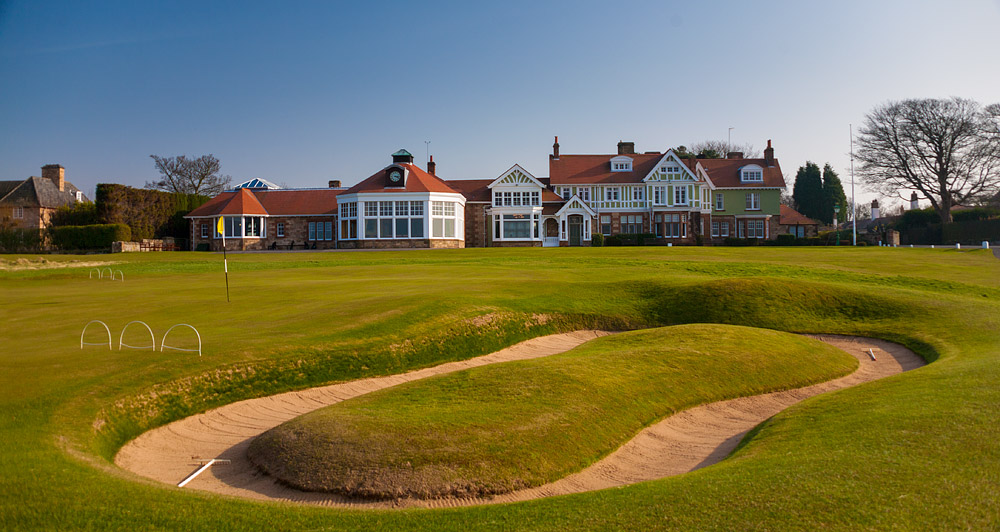 Muirfield Architect: Tom Morris (1891)/H.S. Colt (1932) 18 holes: 6,336yds: par 73.
Muirfield Architect: Tom Morris (1891)/H.S. Colt (1932) 18 holes: 6,336yds: par 73.
The original Golf Club: founded by The Honourable Company of Edinburgh Golfers in 1891 (by which time they had already been in existence for 147 years!), this is where Club golf began. Since then it has hosted 16 Opens (the latest in 2013), the Amateur, the Ryder Cup, the Walker Cup and the Curtis Cup. Evidently highly rated by those in the know. The course itself is over level terrain, there are no huge ranks of dunes and although close to the sea it only comes into view here and there. However the real test at Muirfield are the narrow Fairways, deep, well-placed bunkers, the slick tricky Greens and of course any breeze that may be about. You are sure to have a wonderful day at Muirfield, for the course, the history, the Clubhouse - and don't forget the lunch!
N.B. Tee-times are notoriously difficult to obtain at Muirfield. However, if you stay next door at Greywalls, there will be a much better chance of us getting you on (particularly Sunday nights).

 North Berwick Architect: Unknown (1832) 18 holes: 6,464yds: par 71.
North Berwick Architect: Unknown (1832) 18 holes: 6,464yds: par 71.
A piece of golfing history lesson that is surely unique. Shaped more by Mother Nature than any golfing architect and pristinely maintained, North Berwick has holes and hazards the like of which you will not find on any other course. The land itself is predominantly flat although there are a few small dunes and a couple of blind shots to negotiate. Running alongside the sea for its entire length it is both breathtakingly beautiful and dangerously exposed....

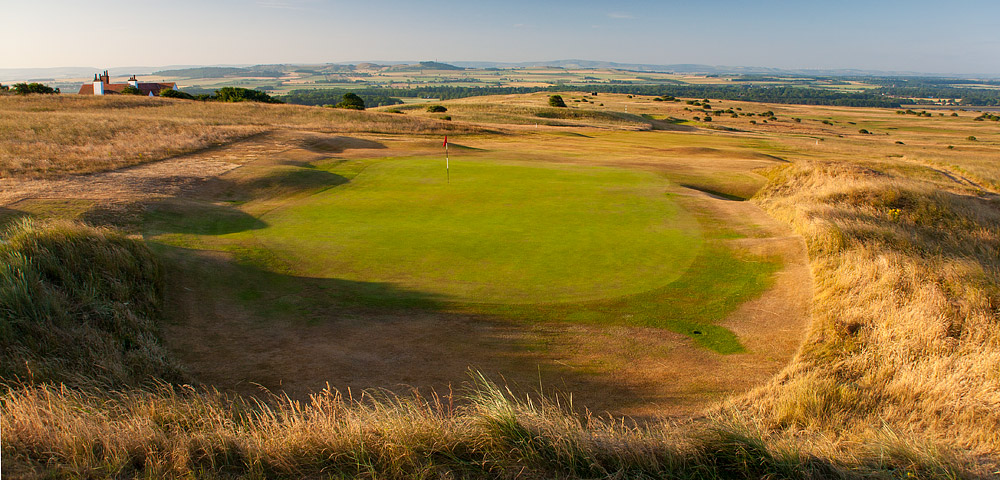 Gullane No. 1 Architect: Unknown (1844) 18 holes: 6,583yds: par 71.
Gullane No. 1 Architect: Unknown (1844) 18 holes: 6,583yds: par 71.
From the 1st Tee in front of the splendid Clubhouse, Gullane No.1 rises up onto the very top of Gullane Hill onto a rounded plateau that looks out over the long grasses across the Forth of Firth to the Kingdom of Fife. Narrow Fairways cut between swathes of towering rough that swishes back and forth in the bracing sea air. Gullane is a strong test of golf and stamina that will expose any weaknesses - but if you are having a bad day, the views are magnificent.
 Gullane No. 2 Architect: Unknown (1898) 18 holes: 6,385yds: par 71.
Gullane No. 2 Architect: Unknown (1898) 18 holes: 6,385yds: par 71.
Gullane Nos. 2 & 3 have their own modern visitors Clubhouse on the opposite side of the road to No.1. From here the No.2 course climbs up the shoulder of Gullane Hill, to reach nearly as high as the summit of No.1 course. From here it wors its way around the side of the hill and Aberlady Bay with plenty of slopes to contend with, before returning back to sea level down the dramatic 17th. Slighly easier walking course than No.1 but still a very demanding course (particularly the short holes) that is on the rosta for Open final qualifying.
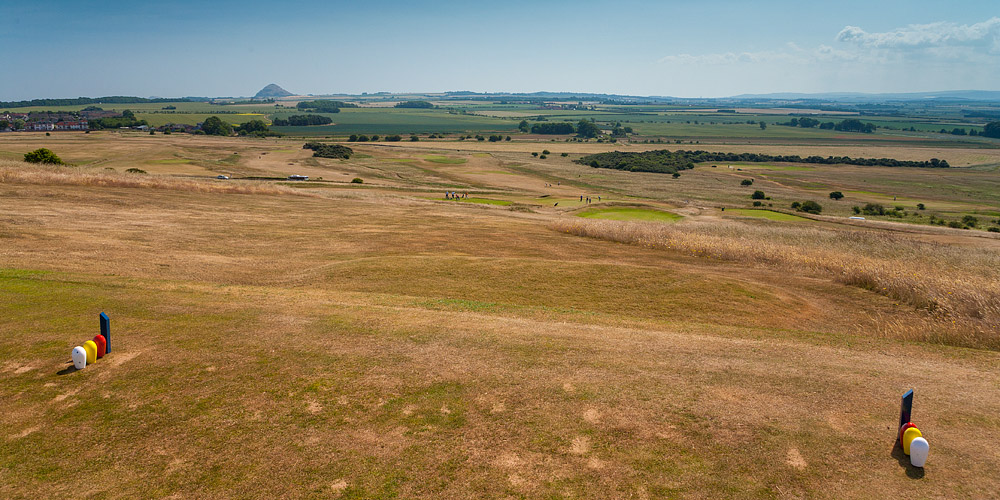 Gullane No. 3 Architect: Unknown (1910) 18 holes: 5,259 yds: par 68
Gullane No. 3 Architect: Unknown (1910) 18 holes: 5,259 yds: par 68
The most recent addition to the Gullane collection, albeit a centenary course! Gullane No. 3 is also the shortest and most approachable of the three, although by no means a pushover! The rough is deliberately kept under control making it the ideal venue for a first dabble with links golf or a quick after lunch round to complete your day.

 Dunbar Architect: Old Tom Morris (1856) 18 holes: 6,597yds: par 71.
Dunbar Architect: Old Tom Morris (1856) 18 holes: 6,597yds: par 71.
Another ancient links at the very end of the Firth of Forth. The holes wend their way out from the small Clubhouse onto a narrow spit of land hugging the rocky coastline. Sea breezes will test your game and the sight of revetted bunkers will test your nerve. An Open qualifying course with a lively Membership and Greenstaff that keep the place in excellent condition.

 Kilspindie Architect: Park & Sayers (1867) 18 holes: 5,494yds: par 69.
Kilspindie Architect: Park & Sayers (1867) 18 holes: 5,494yds: par 69.
A serene and almost dreamlike place to play golf on the very banks of the Firth of Forth. Kilspindie has eighteen beautiful links holes that are a joy to play. A shorter links course, so big hitters may be dismayed at the lack of Driver opportunities, however tacticians and historians of the game will love it.

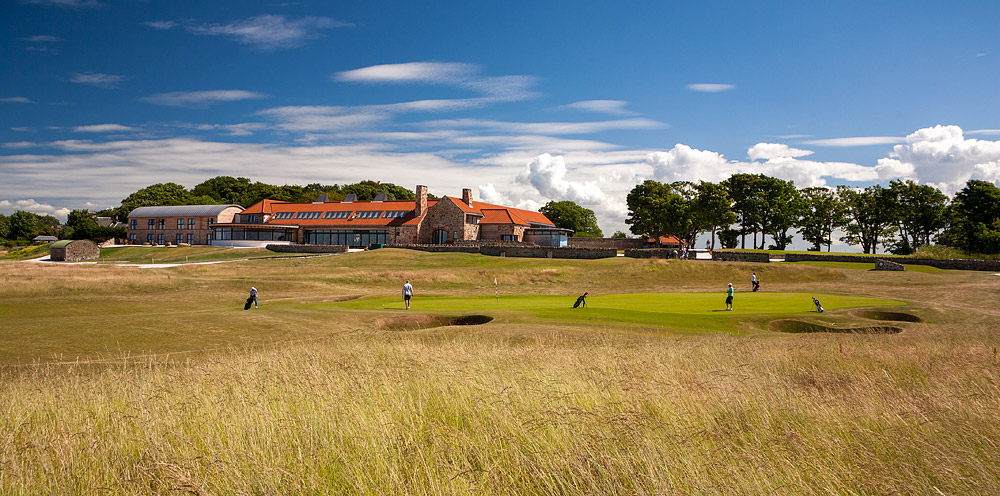 Craigielaw Architect: Donald Steel (2001) 18 holes: 6,601yds: par 71.
Craigielaw Architect: Donald Steel (2001) 18 holes: 6,601yds: par 71.
A modern addition to the links golf options in Aberlady, Craigielaw borders Kilspinie on the inland side so you never play beside the sea; however, sited on slightly higher ground, the Firth is in view all the way around. This is a long course where you will need to deploy your Driver on many ocassions, often aiming at just a marker post on the crest of a rising Fairway. Every bunker on the course is deep and steep, so best avoided!

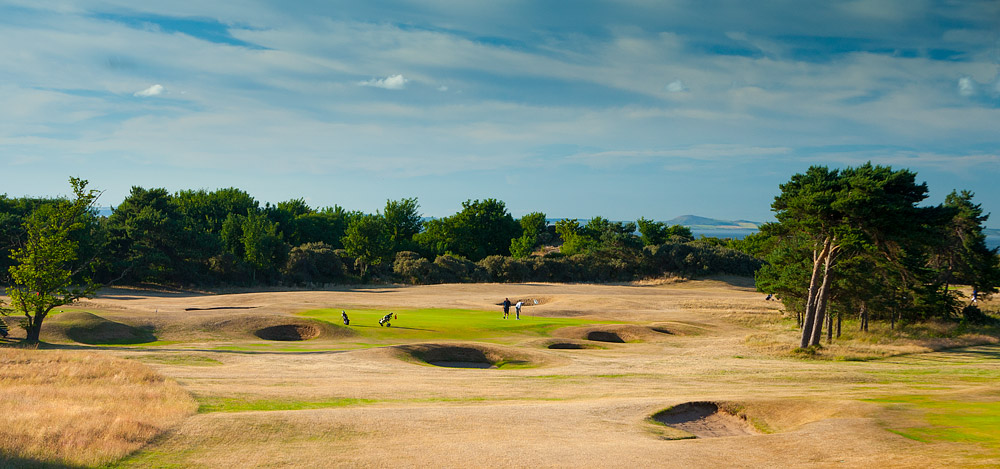 Longniddry Architect: Harry Colt (1921) 18 holes: 6,260yds: par 68.
Longniddry Architect: Harry Colt (1921) 18 holes: 6,260yds: par 68.
A combination course: half-links/half-parkland set back a little from the sea that offers both styles of golf in equal measure. The central section of Longniddry is very links like the two extremities wend their way through tall pines at one end and centurion oaks at the other. So their is a huge variety in the look and feel of each hole. If the par of 68 looks a little low, it is! The Standard Scratch is 70 (there are no par 5s at Longniddry, but eight of the par 4s are over 400yds).

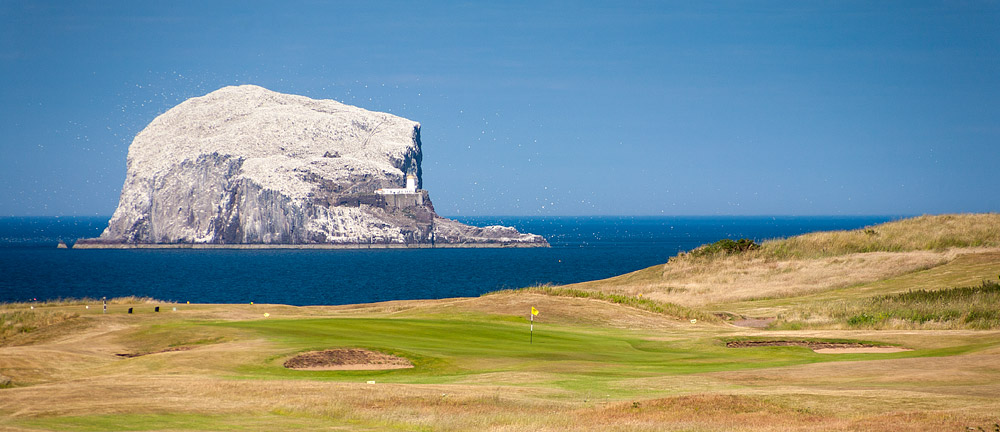 Glen Golf Club Architect: Mackenzie Ross (1906) 18 holes: 6,275yds: par 70.
Glen Golf Club Architect: Mackenzie Ross (1906) 18 holes: 6,275yds: par 70.
The other golf course at North Berwick - that should not be overlooked! The Glen Golf Club lies at sea-level at the eastern end of town. From here the 1st hole takes you up onto the cliffs and around the coast towards the Bass Rock and then back to the 18th Tee from where there is a commanding view of the town and coastline (and sunset if you get your timing right).

 Royal Musselburgh Architect: J. Braid (1925) 18 holes: 6,725 yds: par 72
Royal Musselburgh Architect: J. Braid (1925) 18 holes: 6,725 yds: par 72
Another Club that has played its part in the history of the game having been one of the original homes of the Honourable Company before they settled in Muirfield. A parkland course (which was James Braid's specialist subject) that will both test and entertain, not to mention offer an alternative to the plethora of links golf in Esat Lothian! A lively Members Club with an impressive Clubhouse in the old castle, which is normally bulging with local Edinburgh golfers.

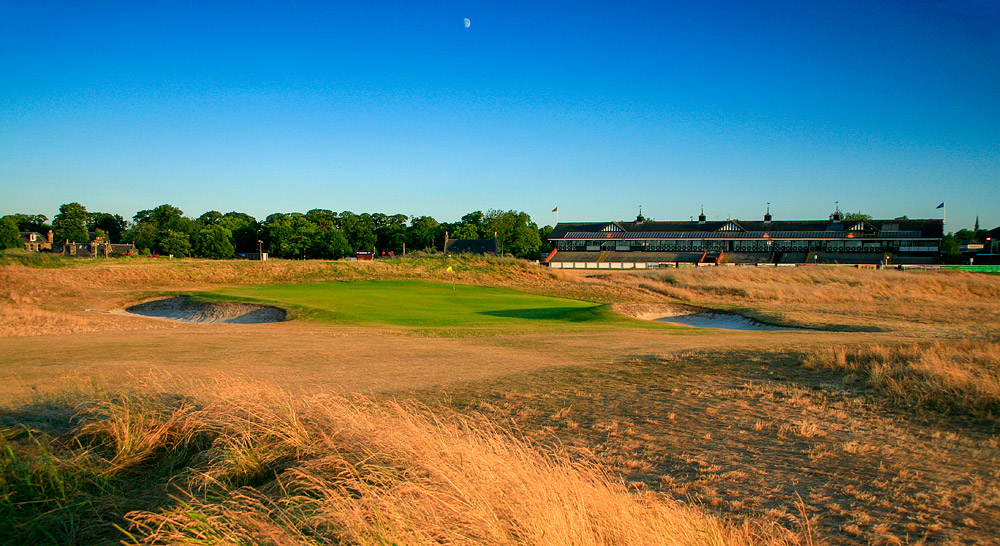 Musselburgh Old Links (9 holes) Architect: Unknown. 9 holes: 2,954yds: par 34.
Musselburgh Old Links (9 holes) Architect: Unknown. 9 holes: 2,954yds: par 34.
One for the purists: just nine holes but a key player in the history of golf having held one of the first Open Championships way back in 1874. Musselburgh is the world's oldest golf course - Mary Queen of Scots reputedly enjoyed a game here in 1567! Now encircled by Musselburgh race course which should be viewed positively as it serves to preserve this unique piece of golfing history.

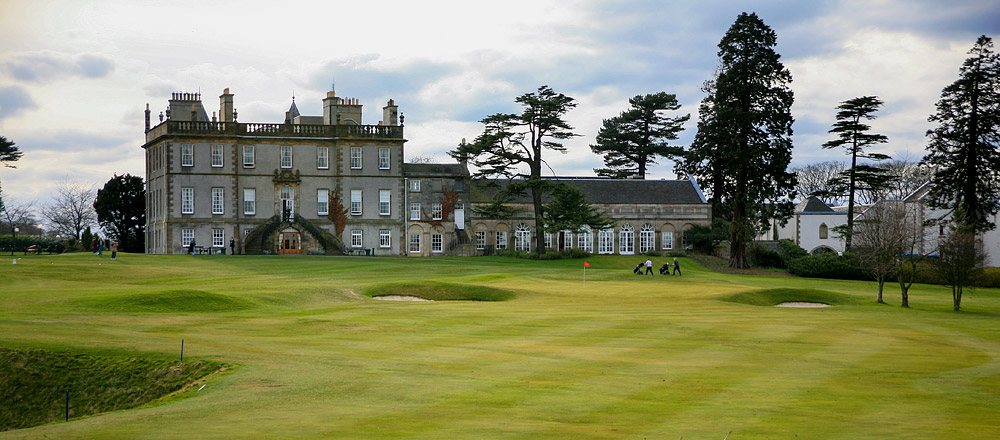 Dalmahoy East Architect: James Braid (1927) 18 holes: 6,030yds: par 71
Dalmahoy East Architect: James Braid (1927) 18 holes: 6,030yds: par 71
If you fancy a change from all the fine links courses around Edinburgh then head inland to Dalmahoy (or Musselburgh, see below). At Dalmahoy you will find two very good parkland courses on land that gently rises and falls around the old castle that is now the Marriott hotel. The East course is the stronger challenge of the two and was the scene of the Solheim Cup in 1992.
Dalmahoy West Architect: 18 holes: 5,168yds: par 68.A shorter course than the and in many respects a scaled-down version of it. The holes runs over the same terrain and have a very similar feel and design to them, just shorter (which is not necessarily a bad thing!). If you are staying at the hotel the West would be a good place to begin and hone your skills before taking on the bigger course.

Other courses to consider
Luffness NewNot that new - it was founded by Old Tom Morris in 1894! Old school golf on the flat plain beside Gullane Hill that is still very links like in character. A real Gentlemen's Club where Jacket and Tie is required throughout the ancient Clubhouse, yet extremely welcoming to visitors.
Archerfield & Renaissance Golf ClubsTwo recent, ultra-exclusive golf developments close to the hallowed Muirfield turf. If you are interested in joining either of these clubs we can arrange an introductory round for you - however you will need to stay at least one night in their respective lodges.


